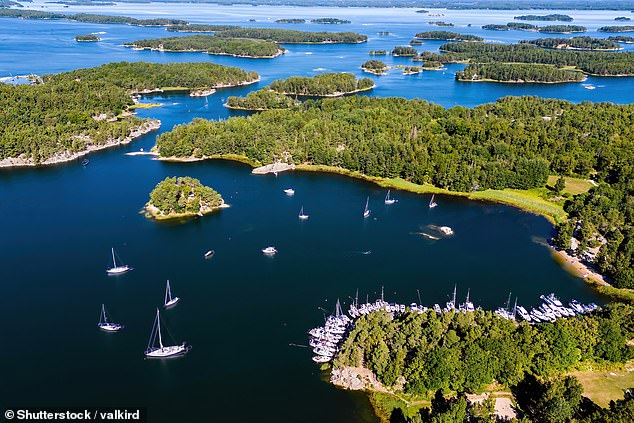At first, I was suspicious. After all, I’d read enough about the far-right Sweden Democrats’ recent electoral gains to have doubts about the country’s liberal credentials. Not only that, but I’ve never liked ABBA and was worried about daily skinny-dipping in the frigid Baltic.
After three days, however, my immersion in the Swedish way of vacationing is quickly proving infinitely more civilized and free of forced nudity than I expected.
The Galo region (pronounced goal-ar) is part of the Stockholm archipelago, a maze of islets and islands scattered like cookie crumbs, less than an hour from the capital.
Flanked by wide sandy bays, rugged cliffs and majestic birch and pine forests, many of the tiny red-roofed cottages along the way are summer retreats, an affordable reality for many Stockholm residents rather than the elite luxury it is for Britons yearning for a second home in Cumbria or the Cotswolds.
To accompany me, I have a whopping 18 members of my partner Emma’s Swedish family, ranging in age from two-year-old Noel to 79-year-old Patrick. We are all staying in the largest cabin that the Galo Havsbad campsite and cabin area can offer and, at first glance, it all seems very similar to the English way of taking a self-catering holiday.
Islands of Beauty: Rob Crossan travels to the Stockholm archipelago (above) and delves into the Swedish way of taking a holiday. He writes: “(It’s) freer from enforced nudity than I expected.”
But slowly, and with a typically Swedish lack of ostentation, I’m beginning to realise how profoundly different the Swedes are.
First of all, they don’t strip down for skinny dipping every chance they get. Swimming is a daily pleasure in this area and I’m surprised to find that the brackish waters of the Baltic (which I can easily access with a 90-second walk from our cabin) are surprisingly warm.
Yet everyone I see is firmly wedded to their swimwear, which is remarkably demure and devoid of the monstrous technicolours that pass for men’s beachwear for many on the shores of Spain and beyond.
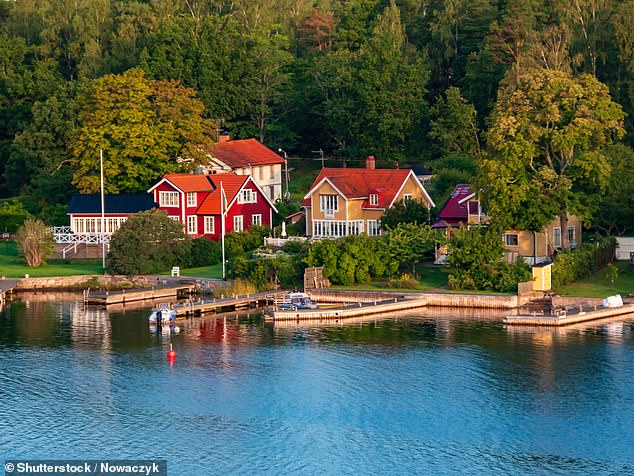
Many of the red-roofed cottages found in the archipelago (above) are summer retreats owned by locals, reveals Rob
One morning, settling into a kayak, I let my paddles glide across the olive-green waters as I took in a panoramic view of skies dotted with billowing clouds, smooth, rounded cliffs and tiny islets populated by bustling redshanks.
As the warm days fade around 9:30pm into an amber dusk, the Swedish tradition of shouting drinking songs while sipping schnapps surfaces in our group.
Translating the songs into English is not easy, but I am told that the tunes are “Swedish classics” that include stories of humans with moose ears and one in which the women claim to have a large icicle protruding from their waist.
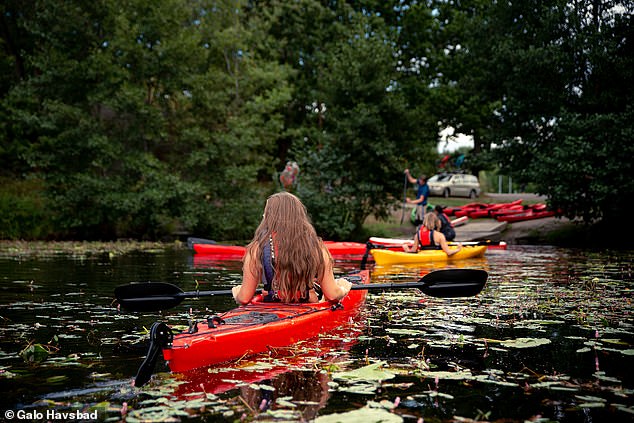
Rob (not pictured) stays at Galo Havsbad Campground and Cabin, where he kayaks on “olive green waters.”
This drink is the prelude to the food served in the most basic Swedish supermarkets. A whole salmon bathed in salt water overnight and then grilled, herring, potato salad, shrimp and, yes, lots of meatballs are shared at our large table while Elizabeth, my partner’s half-sister, explains the values that Swedes place on their holidays in the countryside.
She says: ‘We have a concept called ‘allemenstratten’, which means freedom to move freely. It’s incredibly important in Sweden. It means that as long as you behave well, you have the right to pitch your tent, walk or swim pretty much anywhere you want in the Swedish countryside.’
But even at an organised campsite like this, this maxim applies. One evening, dining at the hotel restaurant, we didn’t encounter any grumpy waiters complaining about having to seat nearly 20 people and waving the bill on the table before we had even finished dessert.
Instead, we simply pushed four tables together and went in to pay two at a time. No one here seemed to have the slightest suspicion that we would leave without paying.
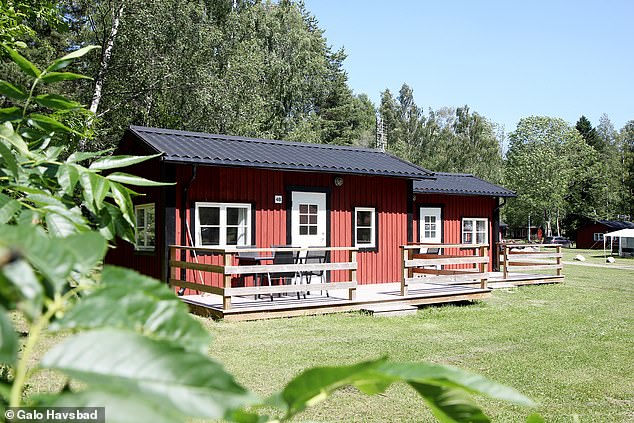
Above, one of the self-catering cabins at Galo Havsbad
The on-site games room is a red barn filled with air hockey and ping pong tables. In the UK, I suspect it would cost money to enter, and it contains a maze of health and safety signs and soft floors. Here, children are trusted to enjoy it unsupervised.
Similarly, when we rent go-karts for some of the children, we do not provide them with safety classes, helmets, or adult supervision. Swedish children are expected to behave well.
When, after dark, the rumbling and chanting continues outside our cabin door and I see a man from a neighboring cabin stride toward us, I fear the worst. But there is no discussion about the noise of conviviality: he simply wants to say hello and asks to join us.
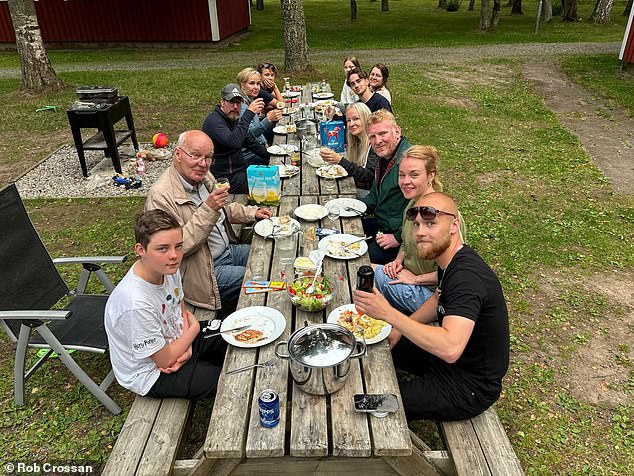
Rob and his group, members of his partner Emma’s Swedish family, enjoy lunch on their doorstep. “The Swedish tradition of singing songs while drinking schnapps is reviving,” he says.
I see Dutch and German car plates all over the campsite, but not a single one from the UK. We are missing out because what impresses me most is the ability of the Swedes to somehow instil a love of community socialising without it turning into the forced joy and brutal scheduling of a Chinese Communist Party workers’ outing.
In short, if you want to do something on your own, no one is offended. So, on my last morning in Galo, I go for a solitary walk along the edge of the bay, slowly making my way along pebble-strewn beaches and rocky peninsulas.
About five kilometres from the campsite I come across a young couple who have decided to pitch their tent directly on a narrow strip of sand.
Sitting together, legs crossed and holding hands, I am tempted to break their romantic reverie by trying to speak a little Swedish.
But I desist. They are demonstrating their sense of “allemenstratten”: alone but together in a country that has turned staycations into an art form of doing whatever one wants without disturbing anyone in the process.

